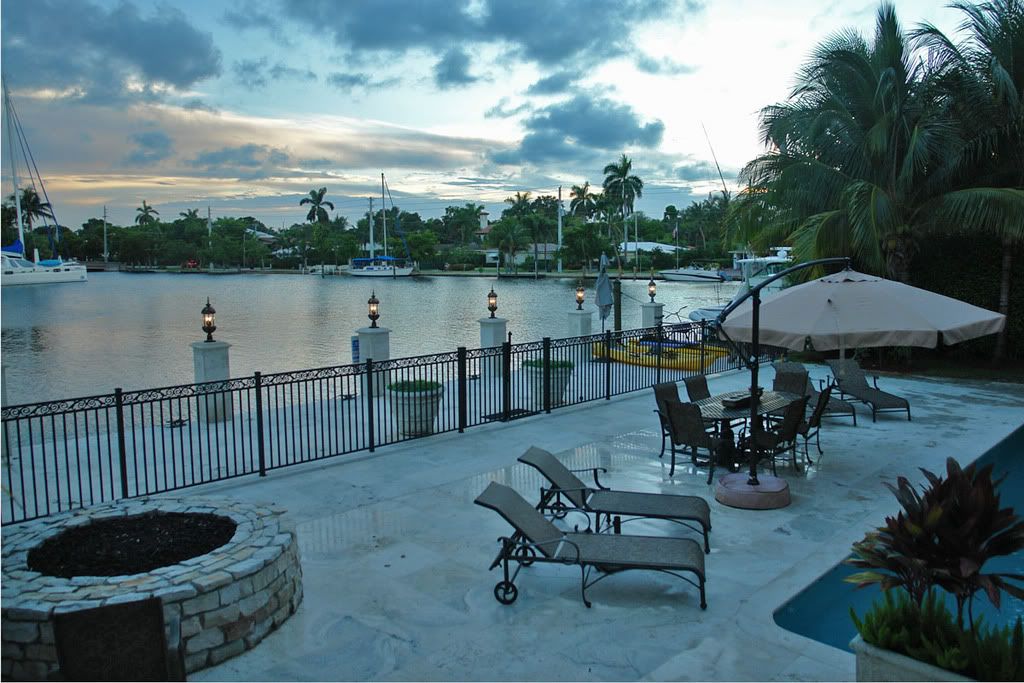It's a new crop of double dippers, taking advantage of a loophole in state law that allows them to "retire'' by taking 30 days off and return to work in their old jobs with a salary and a pension. Many also collect a lump-sum "retirement'' payment that can reach hundreds of thousands of dollars.
At least 25 of those spending December at home were re-elected in November — sheriffs, property appraisers, court clerks and tax collectors, six circuit judges and one state attorney.
None announced their "retirement'' plans before voters cast their ballots, and most have not made any public announcement of the resignation letters they have written to Gov. Charlie Crist.
Earlier this year when the St. Petersburg Times began looking at double- and even triple-dippers, the state retirement system had about 8,000 members collecting paychecks and pensions at the same time. By June that number had risen to 9,397, and it's still growing.
The double-dippers include at least 220 elected officials, an increase of about 40 since last year. An additional 175 are in high-paid senior management positions, up from 146 last year.
The remaining 9,022 are regular employees who work for state or local government. Their salaries are substantially lower.
The newcomers include the state's longest serving sheriff, David Harvey of Wakulla County; North Florida State Attorney Willie Meggs; Broward Circuit Judge Melvin B. Grossman; and Lee County Property Appraiser Kenneth Wilkinson, who worked hard to pass Save Our Homes, a constitutional amendment that limits the property taxes Floridians pay.
A candidate who lost to Wilkinson is considering a court challenge that would question the legality of resigning and returning to office in the face of a constitutional provision that declares the office vacant when an official resigns.
In Broward County, teacher union officials are calling for an investigation of school superintendent Jim Notter for authorizing the rehire of 36 highly paid administrators who will return as double-dippers.
Notter said he allowed administrators to return after retiring only in critical situations when the safety and security of students is at stake. He said 14 of the 36 administrators who have been allowed to double-dip were administrators who returned to the classroom as teachers.
Meggs said he simply changed his mind about plans to retire. "It's my cotton-picking money,'' he said of deciding to collect a lump sum benefit of $519,995, his $153,139 annual salary and a monthly pension of $7,749.
Meggs says he tried to work as a volunteer without pay for 30 days, but state retirement officials said he could not be in the office. He is spending December clearing land and starting work on a new house.
Baker County Sheriff Joey Dobson is getting $311,173 in a lump sum payment and will collect an annual salary of $128,000 and a monthly pension of $5,699. He said he searched for alternatives to taking December off and returning in January, but he said state retirement officials told him it was his only option.
"I have worked for 35 years, but I'm not a wealthy man,'' Dobson said. "I sure didn't want to do it, I hate to be out of the office.''
Meggs and Wakulla Sheriff Harvey both note that the state isn't out any money when it comes to elected officials because taxpayers would have to pay the salary of replacements if they retired. They said the 30-day vacation is required by the state's retirement law.
The 30-day hiatus is also required by federal tax laws.
"You do what you have to do, you would be stupid not to do it,'' Harvey said.
Meggs was unopposed when he sought re-election this year. Harvey won by 57 votes.
"Just call me landslide,'' Harvey joked.
Not everyone is laughing. When the Times first reported on the number of public officials collecting both a salary and a pension, hundreds of outraged citizens called and wrote the newspaper and their legislators demanding changes.
No solution yet, but lawmakers looking
Bills to ban or limit double-dipping were introduced during last year's legislative session but none won approval. Lawmakers promise to try again this year.
"I understand while it may be legal now, it might not be legal after next session,'' Gov. Crist said when asked about the increasing numbers of officials taking advantage of the law.
Some elected officials who submitted resignations for the last 30 days of the year asked the governor to appoint their top lieutenants to their positions for the month of December. Crist refused.
"The governor is not going to participate in this because he opposes the practice,'' said Jason Gonzalez, the governor's general counsel.
Instead, some who submitted temporary resignations got local judges to appoint a temporary replacement, relying on obscure state laws that allow temporary appointments.
Crist wants to help legislators change the law, noting the largesse is conspicuous in these hard times, when public and private employees face pay cuts and layoffs and the state's unemployment rates are spiraling upward.
Sen. Mike Fasano, R-Port Richey, and Rep. Robert Schenck, R-Spring Hill, plan to introduce bills that would limit the number of state officials who can take advantage of the law.
"At a minimum we have to stop the elected and appointed officials,'' Fasano said. "We have to stop it, it's out of control.''
He said the answer may be eliminating state pensions and shifting to a defined compensation program similar to the way private businesses operate.
The state created the Deferred Retirement Option Program in 1998 to encourage highly paid, long-term employees to retire and make way for others who would make less.
Under DROP, public employees who are 62 or have at least 30 years of service retire but continue working for up to five years while their retirement benefits are deposited in a special account. The state pays all of the employee's retirement benefit and guarantees 6.5 percent interest on the DROP accounts plus a 3 percent cost-of-living increase.
Until the law was changed, members of the Florida Retirement System who signed up for DROP were required to leave the state payroll at the end of five years or forfeit the lump-sum benefit.
Lawmakers wrote the loophole into the law in 2001 to help a fellow legislator who, on top of his legislative salary, wanted to collect his lump-sum retirement benefit and his school board pension. Sponsors say they never intended to extend the practice to allow elected officials to "retire'' and return to the same jobs collecting both a pension and a salary.
But lawmakers trying to fix the loophole have run into problems because many fellow lawmakers are among the double- and triple-dippers.
"It's kind of sad because DROP was never intended to help all these people making high salaries stick around,'' Fasano said.
Last year, when lawmakers began considering bills that would have banned double-dipping, Circuit Judge Hugh D. Hayes of Naples suggested that they first appoint a committee to study the issue and wait until 2009 before taking action.Re-elected without opposition in November, Hayes collected $349,723 in a lump sum and will return to the bench in January collecting a $9,259 monthly pension along with his annual salary of $145,080.
Hayes did not return a call; a spokesman said the judge decided to double-dip because it is legal.
Actual cost becomes hard to determine
It's difficult to determine how much double-dipping costs taxpayers.
The $13-million in salaries for elected officials would be spent on others making the same salary, but the $16-million spent on salaries for renewed members of the state pension fund would be substantially lower if veteran senior management employees were replaced by younger, lower-paid employees.
Police unions have vehemently opposed double-dipping, saying it's generally approved for top management and stops rank-and-file members of an organization from being promoted.
The practice has become so widespread that the double-dippers include school board members in 44 of Florida's 67 counties, 14 sheriffs, 11 circuit clerks, three state attorneys, four public defenders, 24 judges, county commissioners from 21 counties, eight property appraisers, seven tax collectors, two elections supervisors and officials from 26 towns and cities.
The chancellor of the community college system, Willis N. Holcombe, and several community college presidents are among the double-dippers.
Holcombe collected $189,370 in a lump sum in 2007 and began collecting a pension of $8,500 a month to go with his annual salary of $190,000.
Miami Dade Community College president Eduardo Padron collected $893,286 in a lump-sum retirement benefit in 2006 and began collecting $14,631 a month in retirement pay in addition to his annual salary of $441,538.
Other double-dipping college presidents include Edwin R. Massey at Indian River State College in Fort Pierce and James R. Richburg at Northwest Florida State College.
Massey collected more than $585,000 in a lump sum last June and now collects a monthly pension of $9,823 plus his annual salary of $286,470.
Richburg, who has been in the news for his controversial dealings with House Speaker Ray Sansom, got a lump sum of $553,228 in 2007 and started collecting a monthly pension of $8,803 in addition to his $228,000 annual salary.
Double-dipping has sparked controversy at the University of Florida's Medical School. In a letter to the university's board of trustees, Dr. Bruce Kone says his objection to double-dipping among highly paid medical school employees is among the reasons he was fired as dean last May.
Kone says the university made deals with some faculty members to pay them during the mandatory 30-day hiatus and had allowed its three highest-paid doctors to start double-dipping.
"This rehiring culture prevented any succession planning in senior positions and led to a dysfunctional, inbred and top-heavy administration and faculty,'' Kone said in his Oct. 22 letter to the trustees.
University officials would not comment on Kone's accusations but released a copy of a 2005 letter saying faculty members who want to return after retiring have to apply for the positions like anyone else.
Double dipping on the rise
| | 2003 | 2007 | 2008 |
| Regular employees | 3,544 | 6,605 | 9,022 |
| Senior management | 34 | 146 | 175 |
| Elected officials | 91 | 180 | 220 |
Most of the governmental employees who are "renewed members'' of the state retirement system get a pension and a salary. The figures include employees at state agencies and at cities and counties that are members of the state retirement system. Numbers are as of June of each year except for elected officials in 2008, which includes 21 who "retired'' in December.
Times researchers Connie Humburg and Caryn Baird contributed to this report. Lucy Morgan can be reached at lmorgan@sptimes.com or (850) 224-7263.
source:
http://www.tampabay.com/news/politics/article950391.ece






















